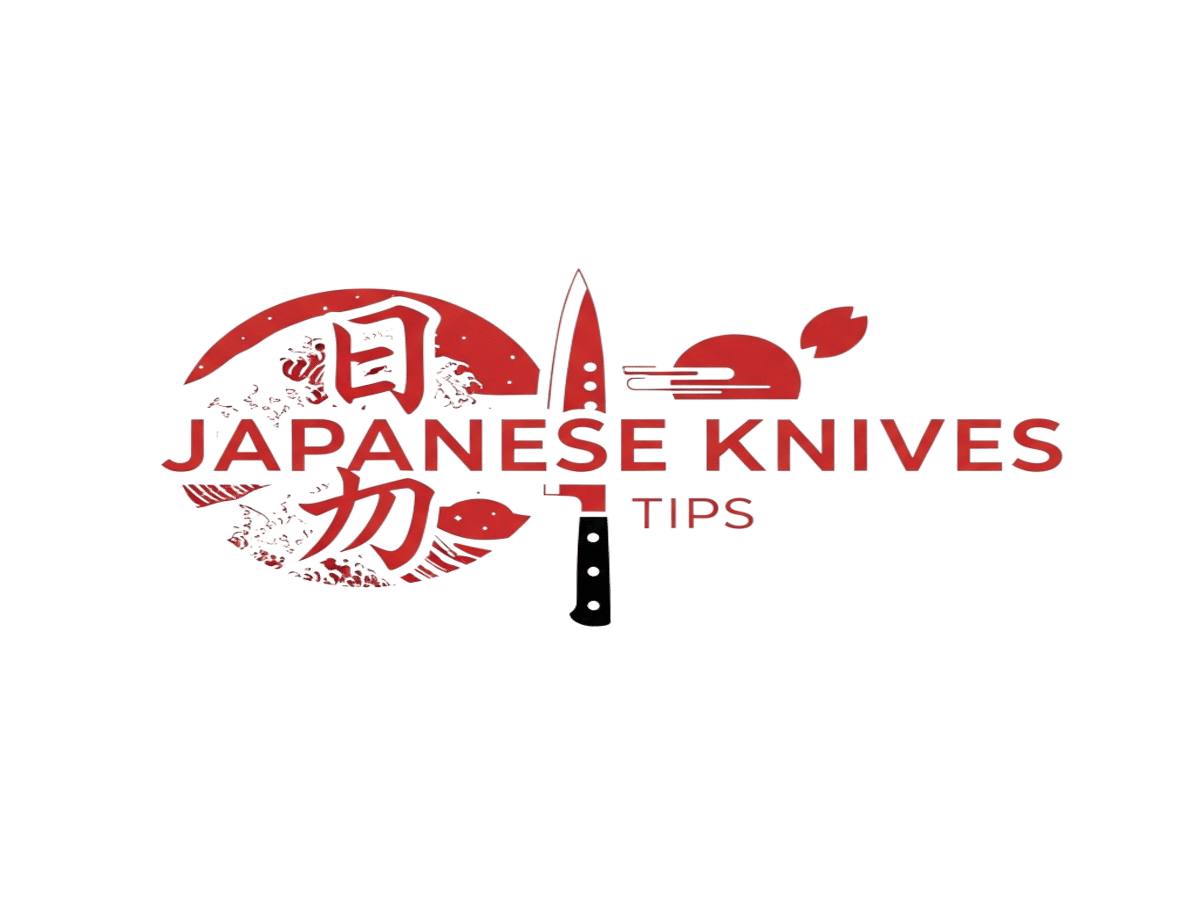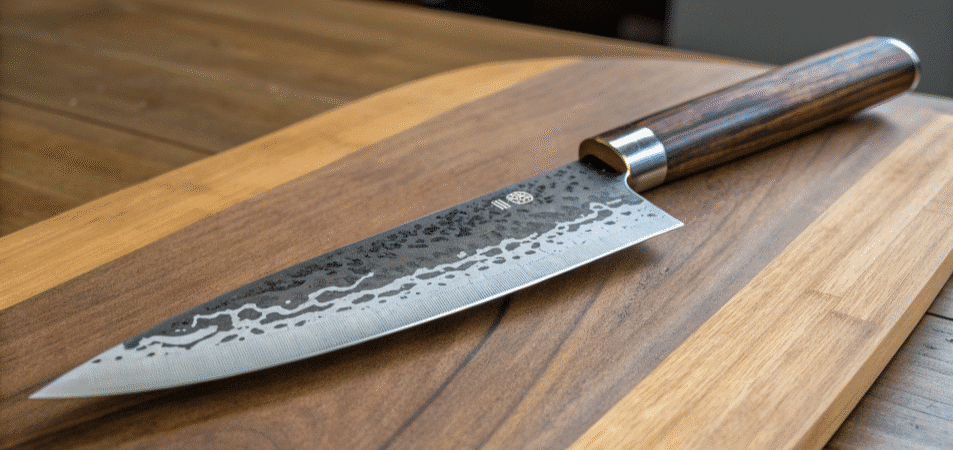If you want to step up your kitchen game, learning kiritsuke knife use is a smart move. This Japanese kitchen knife is a favorite among professional chefs and home cooks alike because it handles slicing fish and cutting vegetables with ease. Its sharp edge and unique angled tip make it stand out from other knives, and its attractive design showcases the craftsmanship and visual appeal that Japanese knives are known for. Getting comfortable with this tool can bring a new level of accuracy and control to your cooking, making the kiritsuke one of the best knives for both home cooks and professional chefs.
- Introduction to Japanese Knives
- What Makes the Kiritsuke Knife Special?
- Anatomy and Design of the Kiritsuke Knife
- How to Hold and Use a Kiritsuke Knife
- Choosing the Right Kiritsuke Knife for You
- Comparing Kiritsuke Knives to Other Japanese Knives
- Taking Care of Your Kiritsuke Knife
- Kiritsuke Knife Sharpening: Keeping Your Blade Razor-Sharp
- Practice Makes Perfect: Mastering Kiritsuke Knife Skills
- Kiritsuke Knife in Japanese Cooking
- Kiritsuke Knives in Modern Cooking
- Staying Safe While Using the Kiritsuke
- Common Mistakes to Avoid with Kiritsuke Knife Use
- Tips for Effective Kiritsuke Knife Use
- Wrapping It Up
- FAQs about Kiritsuke Knife Use
Introduction to Japanese Knives
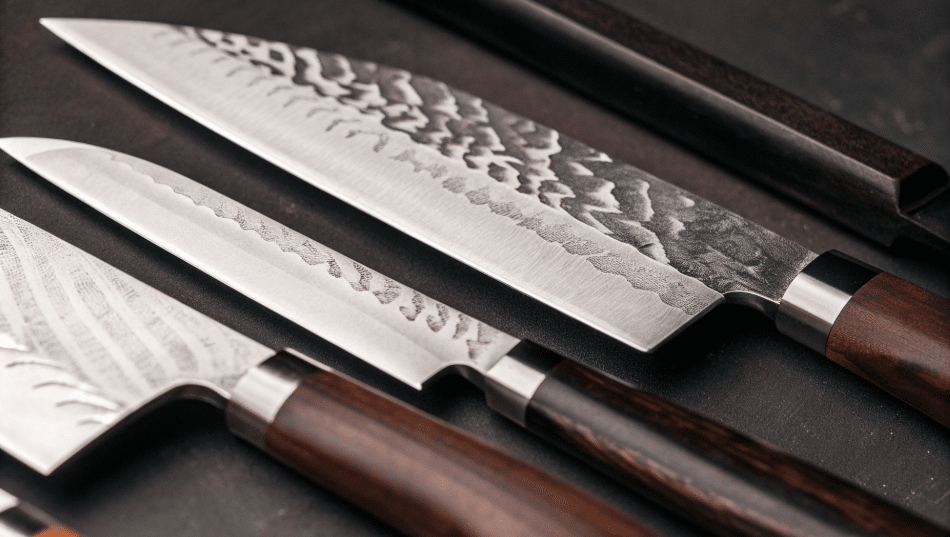
Japanese knives are big worldwide. Why? They’re sharp. They last. They work great. These knives come from old techniques. Centuries old. Japanese chef knives? They’re made with care. Real attention to detail. And respect for the craft. What can they do? Everything. Cut fish with precision. Slice vegetables easily. Chop meats without effort. The kiritsuke knife? It’s special. Has this angled tip. Razor-sharp edge. Professional chefs love it. Home cooks too. Anyone who wants performance and craft. Japanese knives aren’t just tools. They’re art. Culinary art. They make cooking better. How? Unmatched sharpness. Total reliability. Preparing delicate sashimi? Need everyday kitchen prep? A Japanese knife like the kiritsuke brings it all. Tradition and innovation. Right to your kitchen.
What Makes the Kiritsuke Knife Special?
The kiritsuke knife is a blend of style and function. It’s often called a master chef’s knife in Japan because it’s traditionally used by executive chefs in Japanese kitchens. Compared to other chef knives, the kiritsuke stands out for its unique blade shape and combination of precision and versatility, making it a prized tool among professionals.
Its pointed tip is perfect for detailed work, while the long, thin blade makes slicing smooth and easy. The blade is thinner than many Western knives, which helps it cut cleanly without crushing delicate ingredients. As a multi purpose or all-purpose knife, the kiritsuke is suitable for a wide range of kitchen tasks, from slicing fish to chopping vegetables. It is considered a purpose knife, ideal for both vegetables and meats. The handle material varies, but it’s designed to give a comfortable grip for long prep sessions.
Anatomy and Design of the Kiritsuke Knife
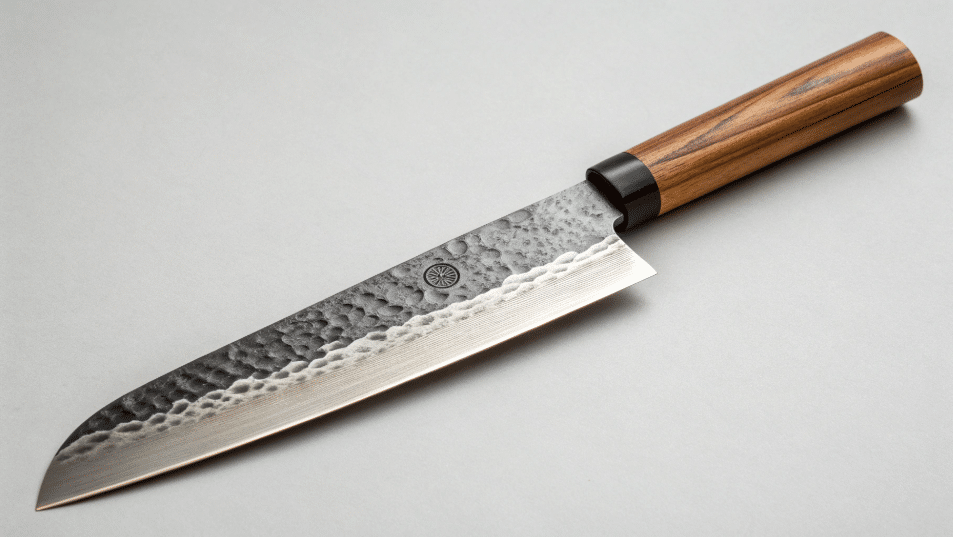
Understanding the kiritsuke knife’s design helps you get the most out of it. The blade length typically ranges from 8 to 12 inches, giving you plenty of cutting surface. The single bevel edge means one side is sharpened while the other is flat, which takes some getting used to but offers incredible sharpness. The kiritsuke represents the core of Japanese kitchen knife design, embodying the fundamental techniques and versatility central to Japanese culinary tradition.
The angled tip is a signature feature. It lets you make precise cuts and score ingredients with control. The blade is often made from high-quality Japanese steel, known for holding sharpness well. Some modern kiritsuke knives have a double bevel, which means both sides are sharpened, making them easier for beginners.
The handle is usually made from wood or resin, providing a good balance and grip. This grip is important because it allows you to use a technique called pinching, where you hold the blade between your thumb and forefinger for better control.
How to Hold and Use a Kiritsuke Knife
Getting the grip right is key to kiritsuke knife use. The pinch grip is the most common way to hold it. Pinch the blade just above the handle with your thumb on one side and your forefinger on the other. Wrap your remaining fingers around the handle. This grip gives you control and safety.
When cutting, use smooth push-cutting or pull-cutting motions. The long blade is great for slicing fish or vegetables in one clean motion. The kiritsuke excels at tasks like slicing fish and making precise cuts. The pointed tip is handy for precision tasks like scoring or making small cuts.
Because the kiritsuke has a sharp edge and thin blade, avoid twisting or forcing it through tough materials. It’s not made for chopping bones or hard items. Instead, focus on delicate slicing and dicing.
Choosing the Right Kiritsuke Knife for You
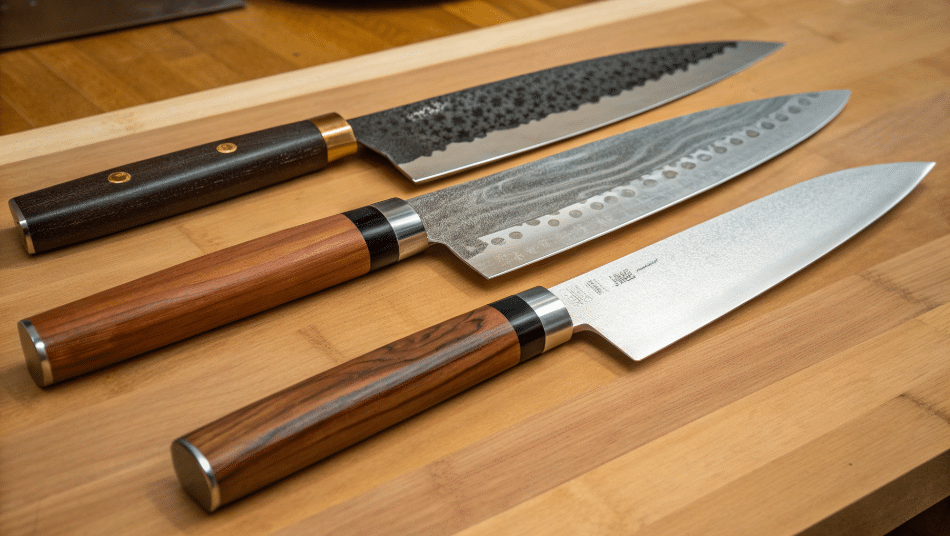
When picking a kiritsuke knife, consider the blade material, handle, and size. Japanese kitchen knives often use carbon steel or stainless steel. Carbon steel holds an edge longer but needs more care to prevent rust. Stainless steel is easier to maintain but might require more frequent sharpening.
Look for a knife with a comfortable handle material that fits your hand well. Wood handles feel traditional and warm, while resin handles can be more durable and water-resistant.
Blade length depends on your comfort and kitchen tasks. A 9-inch blade is a popular choice for versatility. Also, check if the knife has a single or double bevel edge. Beginners might prefer double bevel for easier handling.
You can shop for kiritsuke knives at reputable retailers or specialty stores to find a variety of options for both home cooks and professional chefs. Sometimes, high-quality kiritsuke knives are available on sale, making them more accessible and affordable.
Comparing Kiritsuke Knives to Other Japanese Knives
Kiritsuke knives often get compared to santoku and gyuto knives. The santoku is shorter with a rounded tip, great for chopping and everyday use. The gyuto is the Japanese equivalent of a chef’s knife, featuring a double bevel and versatile design, and is prized for its craftsmanship and durability.
Kiritsuke stands out with its sharp angled tip and single bevel edge, making it ideal for precision work like slicing sashimi or finely cutting vegetables. It’s a bit trickier to use than santoku or gyuto but offers unmatched control once you get the hang of it.
Taking Care of Your Kiritsuke Knife
Keeping your kiritsuke sharp and clean is essential. Use whetstones to sharpen the blade regularly, especially if it has a single bevel. For optimal performance, check or sharpen your kiritsuke knife at least once a week. Avoid using honing rods since they don’t work well on this type of edge.
After using the knife, wash it by hand with mild soap and dry it immediately to prevent rust. Store it in a dry place, like a knife block or on a magnetic strip. Avoid dishwashers or soaking the blade in water.
Using a soft cutting board helps maintain the sharpness and prevents damage. Avoid cutting bones or frozen foods, which can chip the blade.
Kiritsuke Knife Sharpening: Keeping Your Blade Razor-Sharp
Want a sharp kiritsuke knife? You need to keep it in top shape. Sharpening is key. Use whetstones. They work best. Start with a rough stone. This fixes the edge. Then use a fine stone. This makes it razor-sharp. Why does this matter? Your kiritsuke has a special design. One side is different. You need to be careful. Sharpen one side more than the other. This keeps the blade right. It takes time. It takes practice. But you’ll get it. Your kiritsuke will stay sharp. Cutting becomes easy. Your knife lasts longer. It performs better. A good kiritsuke is worth the effort.
Practice Makes Perfect: Mastering Kiritsuke Knife Skills
Start with simple tasks like slicing fish, fruits, or cutting vegetables into strips. Practice controlling the blade with the pinch grip and smooth cutting motions. Watch videos or learn from chefs to pick up tips on technique.
As you get more comfortable, try more detailed work like julienning or scoring ingredients. The kiritsuke’s pointed tip is perfect for these precision tasks.
Don’t rush. The kiritsuke knife rewards patience and practice with clean, beautiful cuts that make your dishes look professional.
Kiritsuke Knife in Japanese Cooking
In Japanese cuisine, the kiritsuke is prized for its versatility and precision. Executive chefs use it for preparing sushi, sashimi, and delicate vegetable dishes. It’s often passed down as a valued tool in kitchens.
The kiritsuke pairs well with other Japanese knives like the deba (for heavy-duty fish cutting) and usuba (for vegetable prep). Together, they cover a wide range of kitchen tasks.
Kiritsuke Knives in Modern Cooking
Today, kiritsuke knives are everywhere. Professional kitchens love them. Home cooks love them too. Why? They work great. They are precise. Chefs appreciate kiritsuke knives. Home cooks appreciate them. They handle many tasks. Slicing sashimi? Easy. Clean strokes every time. Chopping vegetables? No problem. Accurate cuts. The tip is angled. The edge is sharp. This makes results look professional. Japanese cuisine? Perfect. New recipes? Also perfect. Kiritsuke knives are more than tradition. They show Japanese knife-making skills. These skills matter today. They matter in modern cooking. Add a kiritsuke to your kitchen. Your cooking skills will get better. You’ll feel satisfied. You’re working with a special tool. It’s designed for beauty. It’s designed for performance.
Staying Safe While Using the Kiritsuke
Safety is important with any sharp knife. Keep your fingers curled under when cutting and move the knife with gentle, controlled motions. Avoid cutting towards your body.
Store the knife safely when not in use to prevent accidents. If you feel tired or distracted, put the knife down until you’re ready to focus again.
Common Mistakes to Avoid with Kiritsuke Knife Use
One common mistake is pressing too hard while cutting, which can cause slips. Let the sharp blade do the work with light pressure.
Another is using the wrong cutting technique, like sawing back and forth or cutting towards yourself. Stick to smooth, controlled motions away from your body.
Not maintaining the knife properly leads to dullness and rust. Keep it clean, sharpened, and stored well.
Lastly, avoid using the kiritsuke for tasks it’s not made for, like cutting bones or frozen foods, to prevent damage.
Tips for Effective Kiritsuke Knife Use
Want to master your kiritsuke knife? It’s easy. Start simple. Learn the pinch grip first. This gives you control. Real control. Why does this matter? Because precision is everything. Use smooth motions. Push-cut your vegetables. Pull-cut delicate fish. These techniques work. They really work. Keep your kiritsuke clean. Keep it dry. Keep it sharp. This is key. This is everything. Understanding your knife’s strengths? That’s the secret. Practice proper techniques. Practice them often. You’ll unlock its full potential. Precise cuts will happen. Your culinary skills will grow. Care for your kiritsuke. Give it attention. It will become indispensable. Part of your kitchen routine. That’s a promise.
Wrapping It Up
Getting the hang of kiritsuke knife use takes some time but is worth it. This knife offers precision, control, and versatility that can make cooking easier and more enjoyable. With the right grip, care, and practice, you’ll be slicing like a pro in no time. Whether you’re preparing sashimi or chopping vegetables, the kiritsuke is a tool that brings a bit of Japanese kitchen tradition into your home. Give it a try, and you might find it becoming your go-to knife for many kitchen tasks.
FAQs about Kiritsuke Knife Use
Is the kiritsuke knife hard to use?
At first, it can feel a bit tricky because of its long, thin blade and sharp angled tip. But once you get used to the pinch grip and smooth cutting motions, it gets easier. It’s not the best for heavy chopping, so stick to slicing and delicate cuts.
Can I use a kiritsuke knife for all kitchen tasks?
It’s a pretty versatile knife, great for slicing fish and cutting vegetables. But it’s not made for tough jobs like cutting bones or frozen food. For those, you’ll want a sturdier knife. Think of the kiritsuke as your go-to for precision work.
How do I keep my kiritsuke knife sharp?
Regular sharpening with a whetstone is the way to go, especially if it has a single bevel edge. Always hand wash and dry it right away to avoid rust. Avoid dishwashers and don’t cut on hard surfaces like glass or stone to keep the edge sharp longer.
